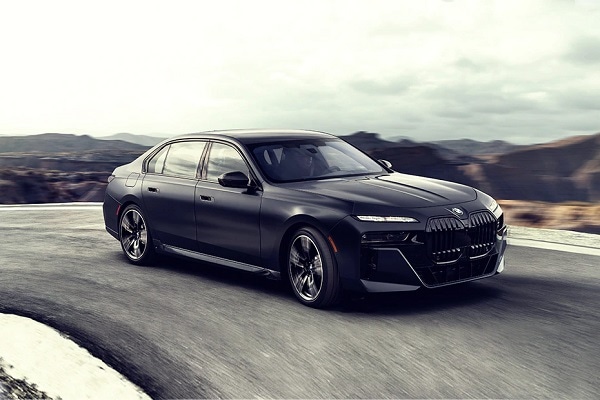Auto sales cool in December, but industry buoyed by overall performance in 2024
- The annual growth in automobile sales was fuelled by strong performances in the two-wheeler, three-wheeler, passenger vehicle (PV), and tractor segments. Commercial vehicles (CV), however, stalled. Automakers sold more than 26.1 million units in calendar year 2024, versus 23.9 million units in 2023.

India’s automobile registrations accelerated by 9.1% in 2024 despite headwinds in the form of extreme weather, uneven monsoons and state elections, the Federation of Automobile Dealers Associations (Fada) said.
The annual growth in automobile sales was fuelled by strong performances in the two-wheeler, three-wheeler, passenger vehicle (PV), and tractor segments. Commercial vehicles (CV), however, stalled.
Check similar cars
Find more cars

Mercedes-Benz AMG C 63 S E-Performance
₹ 1.95 Cr

Offers Expiring soon

Mercedes-Benz AMG GT 63 S E Performance
₹ 3.3 Cr

Offers Expiring soon

BMW i7
₹ 2.03 - 2.5 Cr

Offers Expiring soon

BMW 7 Series
₹ 1.81 - 1.84 Cr

Offers Expiring soon

Audi e-tron GT
₹ 1.72 - 1.95 Cr

Offers Expiring soon

Porsche Panamera
₹ 1.7 - 2.34 Cr

Offers Expiring soon
Automakers sold more than 26.1 million units in calendar year 2024, compared with 23.9 million units in 2023.
December, however, proved to be a disappointment, with overall retail sales declining 12.4% year-over-year to more than 1.7 million units as post-festive inventory build-up, delayed harvest payments, and weak consumer sentiment weighed on demand across segments, Fada said.
Record highs for 2024
The three-wheeler, passenger vehicle and tractor segments hit record highs in 2024, while two-wheeler sales rebounded strongly, nearly returning to their 2018 peak. The CV segment lagged and is yet to surpass the 2018 levels.
Fada president C.S. Vigneshwar told Mint that in 2025, two-wheeler sales are likely to make a new record, after purchases were hit in the aftermath of covid-19 and due to price hikes undertaken to offset expenditure on technology upgrades to meet tighter emission norms.
Read more: ARAI likely to plan division of auto testing agencies allocation under PM E-drive scheme among four agencies
“We're seeing a few key trends. Rural demand for two-wheelers is crucial for the industry, as it accounts for nearly 60% of the market share for the segment. This fell substantially in December. On the other hand, we saw strong results from the tractor segment, which indicates good harvests. However, some have pointed out that while farmers received loans and completed their harvesting, the money hasn't reached them yet...”, Vigneshwar told Mint.
He said that auto dealers noted a drop in walk-ins during the last week of December, which is unusual since typically 30-40% of retail sales for the month occur in that period across all vehicle categories—two-wheelers, commercial vehicles, and passenger vehicles. This could be due to a shift in purchasing behaviour, either with buyers postponing their decisions into January or taking long holidays.
“However, we’ve seen strong walk-ins in the first few days of January, which signals a strong start to the month”, Vigneshwar said.
Two-wheeler sales grew 10.8% in 2024 to over 18.9 million units, but the segment was constrained by financing challenges and rising competition from electric vehicles (EVs). The CV segment remained flat, as uncertainty linked to state elections and sluggish infrastructure spending dampened sentiment. Meanwhile, PV growth of 5.1% was marred by margin pressures from higher inventory levels and steep discounting.
December blues
In December 2024, the two-wheeler segment saw a sharp 17.6% decline in retail sales to about 1.2 million units due to tight rural liquidity, low cash flow, and delayed payments for harvests.
Passenger vehicles sales skidded about 2% to 2,93,465 units, as high post-festive inventory and limited new model launches prompted consumers to defer purchases to January. Dealers also cited aggressive discounting by manufacturers, which pressured margins but failed to substantially boost sales.
The CV segment shrank 5.2% to 72,028 units, hit by delayed government funding and financing challenges. Weak demand for light commercial vehicles (LCVs) overshadowed steady performance in tippers, which benefited from infrastructure projects.
Read more: Mint Explainer: Why the auto sector is not out of the woods
The sole bright spot in December was the tractor segment, which grew 25.7% year-on-year to 99,292 units, buoyed by improved rural sentiment and strong demand for agricultural equipment.
Bharat Mobility to lift January sentiment
The outlook for January is far from upbeat, though. Fada’s dealer survey revealed that 48% of dealers expect sales growth, while 41% anticipate flat performance and 11% foresee a decline.
In the two-wheeler segment, improved minimum support prices (MSP) for crops and better rural liquidity are expected to boost demand, though financing issues and the ongoing EV transition remain potential challenges.
The PV segment could see renewed momentum, supported by new launches and seasonal demand from the ongoing wedding season. However, dealers remain wary of inventory pressures and continued discounting trends.
The industry expects the March quarter to be strong.
“Typically, the March quarter isn’t a strong one, but this time it might perform better due to demand that was postponed from December to January. Bargain hunters will drive the market as 2024-make models are available at attractive discounts. This phenomenon could continue into January. February and March might also see stronger performance because the Bharat Mobility auto show is taking place in the middle of the month (January), which will generate excitement around new car launches and refreshed models. These events will create a momentum that could carry into February," Vigneshwar said.
Catch all the Auto News and Updates on Live Mint. Download The Mint News App to get Daily Market Updates & Live Business News.